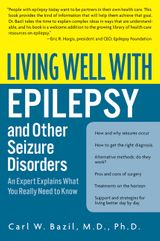In general, the term “alternative therapy” refers to any health treatment not standard in Western medical practice. When used alongside standard medical practices, alternative approaches are referred to as “complementary” medicine.
Complementary and alternative therapies are difficult to define, largely because the field is so diverse. It could encompass chiropractic, acupuncture, neurofeedback, herbology, cranial sacral therapy, homeopathy, cannabinoid therapy, among other treatments. Below we have listed the following in ranked order of how often they have been tried by our community through an online survey that was conducted through our Facebook group.
Ketogenic/Modified Atkins Diet
A top treatment for Doose syndrome we have created an entire section on this.
Cannabinoid Therapy
The second highest alternative and complementary treatment tried we have also created an entire section about this. Note that there is a pharmaceutical option for cannabidiol (CBD) and that is found under the pharmaceutical section of this website.
Acupuncture
Acupuncture is one of the main forms of treatment in traditional Chinese medicine. It involves the use of sharp, thin needles that are inserted in the body at very specific points. This process is believed to adjust and alter the body’s energy flow into healthier patterns and is used to treat a wide variety of illnesses and health conditions.
Chiropractic Therapy
A system of integrative medicine based on the diagnosis and manipulative treatment of misalignments of the joints, especially those of the spinal column, which are held to cause other disorders by affecting the nerves, muscles, and organs.
Homeopathy
Homeopathy is a medical system based on the belief that the body can cure itself. Those who practice it use tiny amounts of natural substances, like plants and minerals. They believe these stimulate the healing process. It was developed in the late 1700s in Germany. It’s common in many European countries, but it’s not quite as popular in the United States.
Cranial Sacral Therapy
Craniosacral therapy (CST) is a form of bodywork or alternative therapy using gentle touch to manipulate the synarthrodial joints of the cranium. A practitioner of cranial sacral therapy may also apply light touches to a patient’s spine and pelvis. Practitioners believe that this manipulation regulates the flow of cerebrospinal fluid and aids in "primary respiration". 1 Russell J, Rovere A, eds. (2009). "Craniosacral Therapy". American Cancer Society Complete Guide to Complementary and Alternative Cancer Therapies (2nd ed.). American Cancer Society. pp. 187–189. ISBN 9780944235713.
Herbology
Medicinal herbology is the use of natural herbs, plants, and botanical knowledge to medically treat individuals. This practice includes using fresh plants, extracts or spices, herbs, and other naturally found growing elements across the world. Someone who practices herbalogy is an herbalist. Ayurvedic medicine generally uses herbs in their protocols. Ayurvedic medicine is a form of alternative medicine that is the traditional system of medicine of India and seeks to treat and integrate body, mind, and spirit using a comprehensive holistic approach especially by emphasizing diet, herbal remedies, exercise, meditation, breathing, and physical therapy
Essential Oils
Essential oils are highly concentrated plant extracts distilled into oil. Popular in complementary and alternative medicine, these oils, derived from flowers, leaves, roots, and other parts of plants, have been used for medicinal purposes in some cultures for centuries. Continuing scientific research has found that certain essential oils do indeed have health benefits; in fact, many modern medications are derived from essential oils.
However, while some oils are beneficial in small doses, others can be dangerous. And because essential oils are not regulated by the U.S. Food and Drug Administration (FDA), most should be used with caution, ideally with the guidance of a certified holistic practitioner. It is known that people with epilepsy should be careful when using certain essential oils, since some contain neurotoxins which have a convulsant effect.
AVOID
- Basil
- Birch
- Dill
- Eucalyptus
- Fennel
- Ho Leaf (Camphor)
- Hyssop
- Pennyroyal
- Rosemary
- Sage
- Savin
- Spike lavender (Lavandula latifolia) [DO NOT confuse it with normal lavender – which is Lavandula angustifolia]
- Tansy
- Thuja
- Turpentine
- Wintergreen
- Wormwood
- Yarrow
OFTEN USED
- Chamomile
- Clary Sage
- Copaiba
- Frankincense
- Holy Basil
- Jasmine
- Lavender
- Ylang Ylang
The benefits of alternative therapies are debated. More research is needed to determine the efficacy of nearly all of these practices, but that hasn’t stopped people from seeking them out.
In closing, the field of alternative medicine is vast. If it seems like new therapies and studies are cropping up all the time, it’s because they are. It’s an evolving area and more research in all of these therapies is needed. That said, integrating some of these into your loved one’s routine may have solid benefits to their health. There’s a reason some of these have been around for thousands of years, after all.
The bottom line is this: We believe in doing what works, as long as you’ve consulted with a doctor or practitioner you can rely on. You may need a combination of Western medicine and complementary therapies to heal. As always, do your research and listen to your child’s body – no one knows it better than you do.
Books


